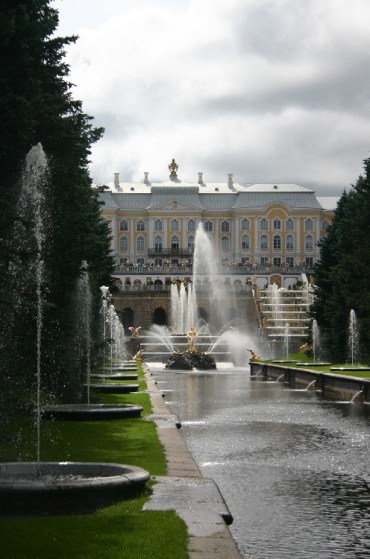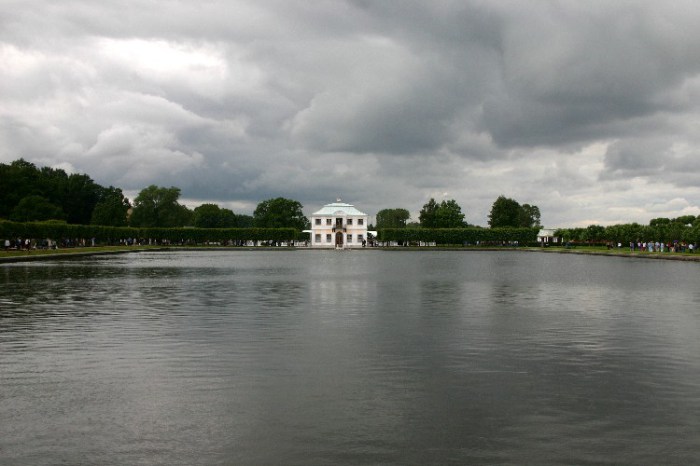Peterhof: The 2nd Summer Palace of Peter the Great
Saturday, July 3rd, 2004: St. Petersburg, Russia
We are off to Peterhof today. The 2nd summer palace of Peter the Great, it was built on the site of a former Swedish fortress (as were most of the great country palaces of the tsars) to show that the Swedes, who had controlled the Neva delta for hundreds of years, and who had thus denied Russia a port on the Baltic, had been truly vanquished from this part of the world.
Arriving Like the Tsars
We take a hydrofoil from the Palace Embankment across the Gulf of Finland to Peterhof – a 30 minute journey which takes you to the sea entrance, the entrance used by the tsars. We have a bit of time to get to know Nico a bit better – currently studying web construction and design, he was educated in Soviet military academies, and served in the army during the period in which the USSR dissolved. We pry, we hope not too much, into life in the military, and the experience of serving while the country you are serving is disintegrating. After leaving the military, he returned from Belarus to St. Petersburg and was a policeman before deciding to return to school.
The Golden Cascade
The 3 palaces at Peterhof (the Great Palace, the Marly Palace and the Mon Plaisir Palace, while beautiful, are not the main event; the fountains are. Entering from the sea as we do, they are almost the first thing we see – at the top of the canal that leads up from the Finnish Gulf, situated just below the Great Palace. We ooh and ahh over the Golden Cascade, then turn our attention to the Great Palace; unfortunately, everyone else has decided to do the same, and as we look at the long line of people patiently queuing, we decide to focus on the grounds and fountains instead. We walk towards the Marly Palace and the Hermitage. The Hermitage at Peterhof was the first one built by the Russian czars, long predating the more famous Hermitage attached to the Winter Palace in St. Petersburg. It was used as a dining room, surrounded by a moat to ensure solitude, and employed a clever mechanical device, whereby the table was set and the food served in the basement, and the table was then raised to the main level, so that the servants did not intrude on the tsar and his guests. We walk past many fountains as we wonder the grounds, marvelling at the fact that they all date to the first half of the 1700s, and all operate solely on gravity. Some of the fountains are quite whimsical – these are mainly designed to help you cool down on a hot day, by gushing out of a bench that you may have unsuspectingly sat on, or by coming out of the ground when you step on certain rocks by the side of a pond.
The Cathedral of Peter and Paul
We are all dragging by this point, and we leave the palace complex by the main entrance, on its land side. We walk the short distance to Petrodvorets, the town outside the palace gates and arrive at the Cathedral of Peter and Paul, built in a very different style that that of baroque St. Petersburg. Although the second Cathedral of Peter and Paul built by Peter the Great (the first still stands inside the Fortress of Peter and Paul, in St. Petersburg), this is clearly not a cathedral built to be used by the imperial family – despite the gold of its icons, it is on the inside a very simple church.
We grab a minibus back to the last stop on one of the metro lines in St. Petersburg, take the metro into the centre, then grab a bus to the hotel, where we collapse, our feet and our bodies tired.
Dinner tonight is at a little café across the street from the Mariinsky Theatre, then it is early to bed.













Comments